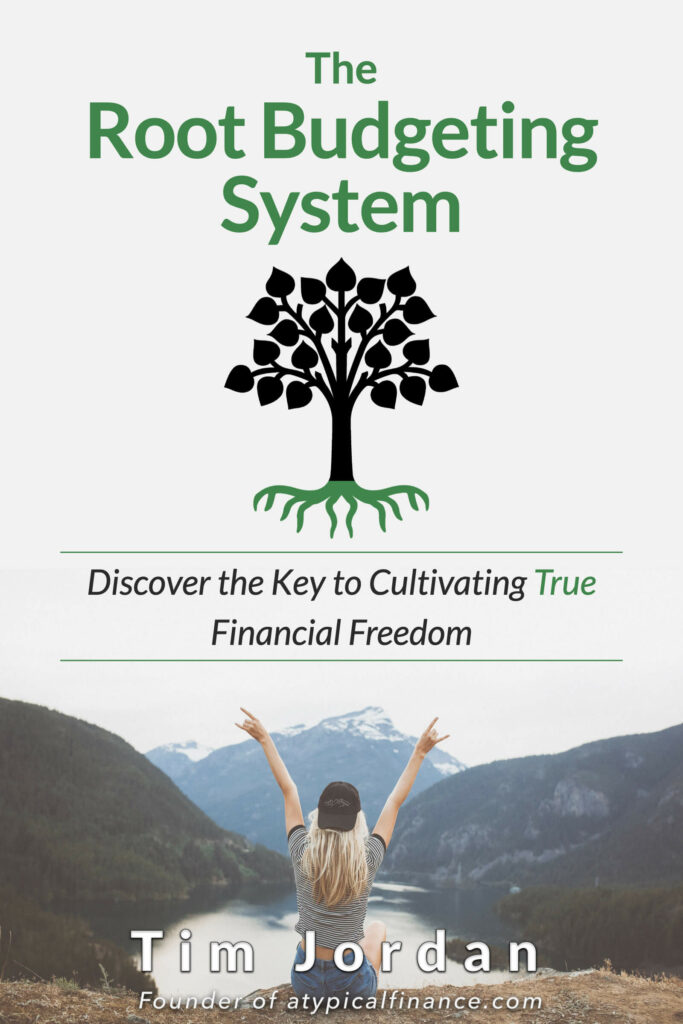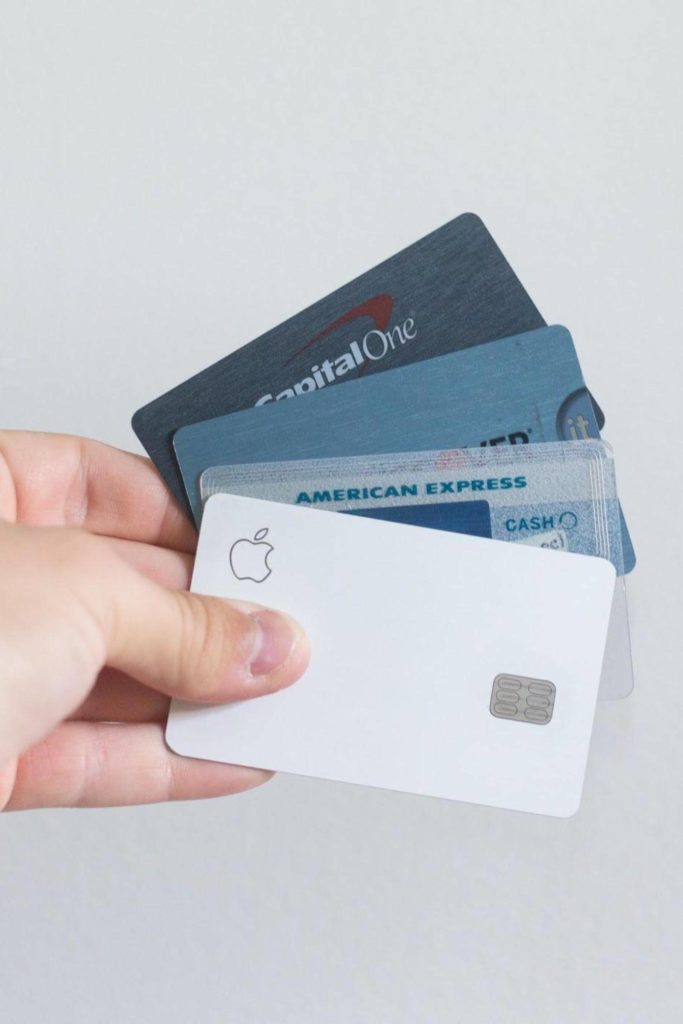There are many different budgeting methods out there floating around in the ocean of information that we call the internet. Some are simple and some are complicated.
A lot of them don’t work. This makes it hard to find a method that will work for you.
Why is Budgeting So Difficult?
To answer that question, we need to look at the definition of “budget.”
Merriam-Webster defines the verb of budget two separate ways with those being broken out in two additional ways each.
So that’s four possible definitions in total. They are:
- to put or allow for in a statement or plan coordinating resources and expenditures: to put or allow for in a budget
- to require to adhere to a budget
- to allocate funds for in a budget
- to plan or provide for the use of in detail
Anyone else confused?
Maybe I’ve been out of school too long but that seems to overly complicate what it means to budget, especially when you’re talking about personal finance.
So let’s simplify budgeting. Here is my definition that I’ve introduced my clients to, and the one in my book.
Budgeting is “a living and breathing plan for your money so you do not spend too much or too little.”
That’s it. Simple and sweet.
Too Much or Too Little
 So what do I mean when I say too much or too little?
So what do I mean when I say too much or too little?
Well, this is part of a greater philosophy that is at the core of Atypical Finance.
Atypical Finance was founded with the idea that you are unique, and your budget should reflect that.
In budgeting, if you take someone else’s method and apply it to your life to the letter, you will almost always end up spending too little or too much in certain areas of your budget.
To put it bluntly, you are much more likely to fail with your money.
This is because everyone is different.
Everyone’s life and values are different. Everyone’s situation is different. And everyone’s goals are different.
It’s important that you are creating your own budget that fits your own life, values, situation, and goals.
It is much easier to stick with your budget if you are not telling yourself you cannot spend money on the things you want to spend money on.
This is why people think budgeting is so limiting. They are spending too little on the things they value.
Instead, they spend it on the things that make them feel better or what other people tell them to spend money on, and then there isn’t anything left for what they want.
Cut out the things you do not value in order to have money for the things you do value.
You could be spending too much money on all the wrong things and too little money on the things that will help you get ahead financially.
By creating your own budget by picking the best method for you, you also won’t be spending too much or too little time in managing your budget.
It’ll be just the right amount of time.
The 7 Best Budgeting Methods
In my years of studying personal finance and being a financial coach, there are seven methods I have found to be the best, and one I’m particular fond of.
Here are all seven methods, who should try them, and what to watch out for if you do.
1. The Balanced Money Formula
 This method, popularized by Elizabeth Warren and Amelia Tyagi, is also called the 50-20-30 method.
This method, popularized by Elizabeth Warren and Amelia Tyagi, is also called the 50-20-30 method.
The idea is to spend 50% of your total income on your needs, 20% on saving, and 30% on wants. The 50-20-30 method is very simple to maintain, which is one of the reasons why I find it to be among the best budgeting methods.
Your needs consist of things like your mortgage, utilities, clothing, groceries, gas or other transportation, healthcare. and gas money.
Basically, these are things you couldn’t live without. And by that I mean actually can’t live without.
This does not include things you say you can’t live without, such as Princess Vespa’s (of Spaceballs fame) industrial strength hairdryer.
Your savings consist of your retirement goals, emergency fund, and debt repayment.
So if you are trying to pay off your debt, it would fall into this category.
Your wants are exactly that. This is pretty much everything else.
Cable TV, internet, dining out, clothing beyond what would be considered basic (you do not need that new dress that just came out), vacations, that shiny new iPad, and junk food would all be included in this category.
Who Should Try This Budget?
The point of this method is to not have to budget for every category.
You only have the 3 categories to worry about instead of a dozen or two.
So if you are someone who is turned off by the traditional methods of budgeting for every line item or every category, then I encourage you to give this one a try.
What to Watch Out For
Overspending can be a common occurrence with this budgeting method.
Since you aren’t budgeting for every category, it can be easy to spend a little too much on something like food and then forget that you are low on gas in two cars and go a little bit over budget.
To remedy this, I recommend to either overestimate or have some wiggle room in each of your budgets. That way you can freely move your budgeted “wants” money to your “needs” category if you overspend.
2. Cash-Only Budgeting
 This is exactly how it sounds.
This is exactly how it sounds.
Also, called “Envelope Budgeting,” Cash-Only Budgeting is where you use actual cash (those are the green pieces of paper you rarely see in the U.S. these days)to use as your spending money. There is no room for plastic here!
What you do is allocate your money to your separate categories and then withdrawal cash out from your bank account. You then put the cash in envelopes labeled to match your categories.
Let’s use a grocery budget as an example.
If you have a $400 a month grocery budget, you would withdrawal $400 in cash from your bank account and then place that money into your envelope labeled “Groceries.” Fairly straightforward.
Back when I was using Quicken, I developed an electronic version of this method that may suit you well if you’re using Quicken or a spreadsheet.
It served me well for many years until I switched over to You Need a Budget (YNAB). This method is basically built into YNAB, which I LOVE!
There are other apps you can use with this method as well.
Who Should Try This Budget?
If you struggle with overspending, this is a great way to help reign that in.
Once the cash is gone, you can’t get more. This method requires you to leave the credit cards and debit card at home.
It’s ok to take one credit card strictly for emergencies. Just make sure you are ONLY using it for an actual emergency.
This method is also good for those that really like to have control over their budgeted categories and how much cash is allotted to each category.
What to Watch Out For
When you are dealing with cash, there is always a chance that you’re going to lose it. You could drop the money or misplace it.
Luckily, Amazon has a great selection of physical wallets and notebooks that can be used to help minimize that risk.
Again, it may be a good idea to keep a credit card in your wallet just for emergencies.
However, this is something else to watch out for. It will be tempting to use it for things other than emergencies.
3. Zero-based Budget
This method sometimes comes with the tagline “give every dollar a job.” If you hear that term, you know they’re talking about the Zero-based Budgeting Method.
Zero-Based Budgeting is where the money you have in income matches exactly what is going out of your account.
Now, this doesn’t mean that you are literally spending all of your money. This also refers to money deposited in a savings account, 401K, or Roth IRA because the money is leaving your account.
You are essentially “paying” those accounts.
This is where the term “give every dollar a job” comes from.
Some portion of your money you’re giving the job of paying your electric bill or mortgage and others you are giving it the job of funding your retirement or emergency fund. Every dollar is accounted for.
This is one of the hallmarks of Dave Ramsey’s method of budgeting. He even created an app for it.
This is also built into YNAB if you use it the way they want you to.
With this method, if you were to save and spend exactly what was in each of your budgeted categories, you wouldn’t be positive or negative. You would literally be at $0.
Who Should Try This Budget?
Zero-based budgeting is the ultimate budget for those who want to be completely in control of their money.
It allows you to micromanage your money—in a good way—as you see fit. You get to decide in advance where every one of your dollars gets to be spent.
You typically wouldn’t spend any money unless it’s planned for.
If this sounds appealing to you, this budgeting method may be exactly what you’re looking for.
What to Watch Out For
Zero-based budgeting can be quite time-consuming due to how much planning and tracking is involved.
Ideally, you’ll want to find a way to record every transaction as it happens so you know you’re not going over on a budget.
If you don’t have the time to do it, then you may get off track with your finances. This can lead to needing even more time to catch up.
The app I use and love for tracking my money is You Need a Budget (YNAB for short). Sign up through my link and you’ll get an additional 30 days free once you subscribe. This is in addition to the 34-day trial! Check it out! I love the app and use it daily.
In my opinion, at least in my own life, I have found that giving every dollar a job can lead to budget burnout.
Something I’ve noticed is that I need wiggle room in my budget. With Zero-based Budgeting, there is no wiggle room.
Again, this may not happen for everyone, but it’s just something to watch out for.
 4. The 60% Solution
4. The 60% Solution
Similar to the Balanced Money Formula, this method uses percentages to manage your finances rather than specific dollar amounts.
This method was first proposed by then editor-in-chief of MSN Money, Richard Jenkins.
He claims that budgeting in and of itself is very tiresome with the amount of work involved so he recommends the 60% solution.
How It Works
60% of your income is used for what Richard calls “committed expenses.” These include your mortgage, food, basic clothing, car payments, insurance, etc.
Where this differs from the “needs” category of the Balanced Money Formula is that literally ALL your bills are included in this category, including such wants as cable TV or your expensive cell phone plan.
These are bills that have to be paid each month.
The remaining 40% of your income is divided into four categories with 10% allocated to each category. They are:
- Retirement– This is your standard 401K, Roth IRA, etc. It’s always best to get these subtracted from your paycheck if you can.
- Long-Term Savings– This is your emergency fund and standard stock purchases
- Short-Term Savings– This category is in a separate account that can be easily accessed to transfer funds to your checking account. The money in this category is used for things such as vacations, irregular expenses, and other bigger expenses. The idea is to be able to use all of this money over the course of a year.
- Fun Money– The last 10% is where the “wants” come in. This is where things like dining out come in. These expenses are things that you can easily manage and don’t have to be paid. Let’s face it, you don’t have to go out to eat so it goes here.
In his article, Richard says that, since only 70% of his expenses are actually seen by him—the 60% of committed expense and 10% fun money—he doesn’t really miss the other 30%.
Most of this is because he automatically deposits the savings money where it needs to go.
Who Should Try This Budget?
So admittedly, this budget sounds intriguing. If you’re someone who likes to automate things—one of my three pillars of budgeting—this is a great way to ramp up your savings.
By only allowing for 60% of your income to be used for bills, you have the ability to save much more than normal.
It’s almost like giving yourself an artificial pay cut and living “paycheck to paycheck” on 60% of what your income actually is.
What to Watch Out For
Since you are working with percentages, there may be a temptation to no longer track your expenses—another one of my three pillars of budgeting!
You have your bills all taken care of with the first 60%, your savings are automated with 30% (divided in 10% increments), and your fun money doesn’t go over 10%. Richard even says in his article that he really doesn’t track his expenses.
In my opinion, it’s still important to track your expenses so you know you’re not going over your budgeted amount.
You won’t have to worry too much about your 60% of committed expenses, but you’ll at least want to make sure the dollar amount equivalent of 10% of your income isn’t overspent. I recommend tracking that 10% at the very least.
The last thing to watch out for is the difficulty, not in using this budget itself, but getting to a place where you can use this budget.
It may be difficult to either limit your expenses enough or obtain enough income in order to get to the point where your bills are only 60% of your income. Definitely doable—just might be difficult.
5. The “No Budget” Budget
 This is essentially how it sounds.
This is essentially how it sounds.
The only thing you have to pay attention to is your bank account balance. There isn’t even a need to track your expenses.
Believe it or not, this actually works for some people.
Some of this overlaps with the 60% solution in that you would automate your savings and make sure there is enough in your checking account for all of your bills. You can spend as you see fit on everything else.
Ideally, you would also want to automate paying all of your bills as well as make them as regular as possible, i.e. the same amount every month.
This way you can simply add up all of your bills, make sure that money is in the right account, and then not have to worry about it from there.
Who Should Try This Budget?
This budget is for people who really don’t like to budget.
If you hate figuring out numbers or putting in the time to manage your budget down to the dollar, this method might be for you.
It requires very little work and very little, if any, tracking of your expense.
I admit, even though I am a personal finance nerd and like to look at my budget, the “No Budget” Budget is appealing to me just because of the time savings.
This method may be best for those on a little bit higher of an income level since there really isn’t much tracking involved.
What to Watch Out For
Since you are not tracking your expenses, the “No Budget” Budget can be dangerous if you are prone to overspending.
It’s important to make sure you are really prioritizing saving due to the fact that you will need extra money if you overspend or something unexpected comes up. For this reason, having a proper emergency fund is best.
Again, a higher level of income may be needed for a budget of this type. Be careful if you are trying this on a lower income.
6. Values-based Budget
The Values-based Budget is another budget that may be better for a little bit higher level of income.
This method relies on quite a bit of soul-searching and self-discovery because the “values” in the name are your values.
The first time I read about this method was on Young Adult Money.
The hook of this method—which still involves tracking your spending—is to spend money based on your values rather than worrying about how much you are spending in specific categories.
For this method, you’ll want to write down what you’re allowing yourself to spend your money on based off of what you value.
So if you value travel, write that down. If you value discovering delicious coffee or new cuisine, write that down. Whatever isn’t on your list, you wouldn’t really spend money on.
For example, if having the latest electronic gadget is on your list and not travel, you would spend your money appropriately getting the next Apple Watch (or equivalent) rather than saving up for a trip to Europe.
Who Should Try This Budget?
Erin from Young Adult Money writes that this method is good for “those who are already frugal, very aware of and disciplined with their spending, and those who naturally enjoy saving.” I would agree.
She also mentions that it can be freeing to not have to track every dollar.
I recommend giving this budget a try if you don’t like the amount of time it takes to track your spending but don’t want to go as far as the “No Budget” Budget above.
What to Watch Out For
I don’t recommend this method for those who are not yet disciplined enough to automatically save their money.
If you don’t really like to save your money and really like to spend your money on whatever you want, whether you value it or not, then this method may not be for you.
As I mentioned, I also recommend you find out exactly what your values really are. Values that aren’t solidified or are the result of something going on in your life will change.
For example, I used to value video games, or at least I thought I did.
Getting to the root cause of why I would spend money on video games, I discovered that I was not happy with life at all, and that’s why I was spending money on videos games. I didn’t really value them.
Figuring out what you value is also a great way to begin to change your mindset as well.
7. The Root Budgeting System
 This is the method I use, the method I created, and the method I introduce all my clients to.
This is the method I use, the method I created, and the method I introduce all my clients to.
The Root Budgeting System is a method I created when I discovered that following someone else’s method was constantly limiting my money. It’s designed to allow who you are, what your situation is, and what your goals are to shine through in your budget.
It allows you to be who you are in your budget.
In my mind, this is the absolute best budgeting method because it allows you to reach true financial freedom by teaching you how to build your own budget instead of following someone else’s budget.
I’ve written a full length book on this method if you want to implement it in detail.
In short, the Root Budgeting System shows you how to create the perfect budget for you in five steps. The Root Budgeting System:
- Takes you through the foundational basics of budgeting. Income, expenses, the best way to incorporate each, and how they relate to each other.
- Teaches you the Three Pillars and shows you how to implement them into your budget. There are three things every budget needs (yes, only three).
- Helps you figure out your values. This is your show. You can learn how to identify your values and how to implement them into your budget.
- Teaches you how to choose the budgeting principles that make sense for you. You only have to give every dollar a job if you want to (I don’t).
- Show you what frequency (or how often) you should be budgeting. Never forget to pay a bill again—or where the money will come from.
Following those steps and using them to personalize your budget will make your budget simple to maintain, grow as you grow, and help you to ultimately build the life that you want.
It’s treating your finances how they are meant to be treated—personal. Remember, you are unique and your budget should reflect that.
You can check out The Root Budgeting System and purchase it on Amazon here.
Conclusion
The important thing is to create your own budgeting rather than trying to conform to someone else’s.
Do that and you will have clarity on how to reach your goals, and you won’t have to worry about being limited in your budget.
You cannot be in complete control of your money if you’re not budgeting in the best way for you. True financial freedom is being in complete control of your money now.
That’s the magic of personal finance and The Root Budgeting System.



















